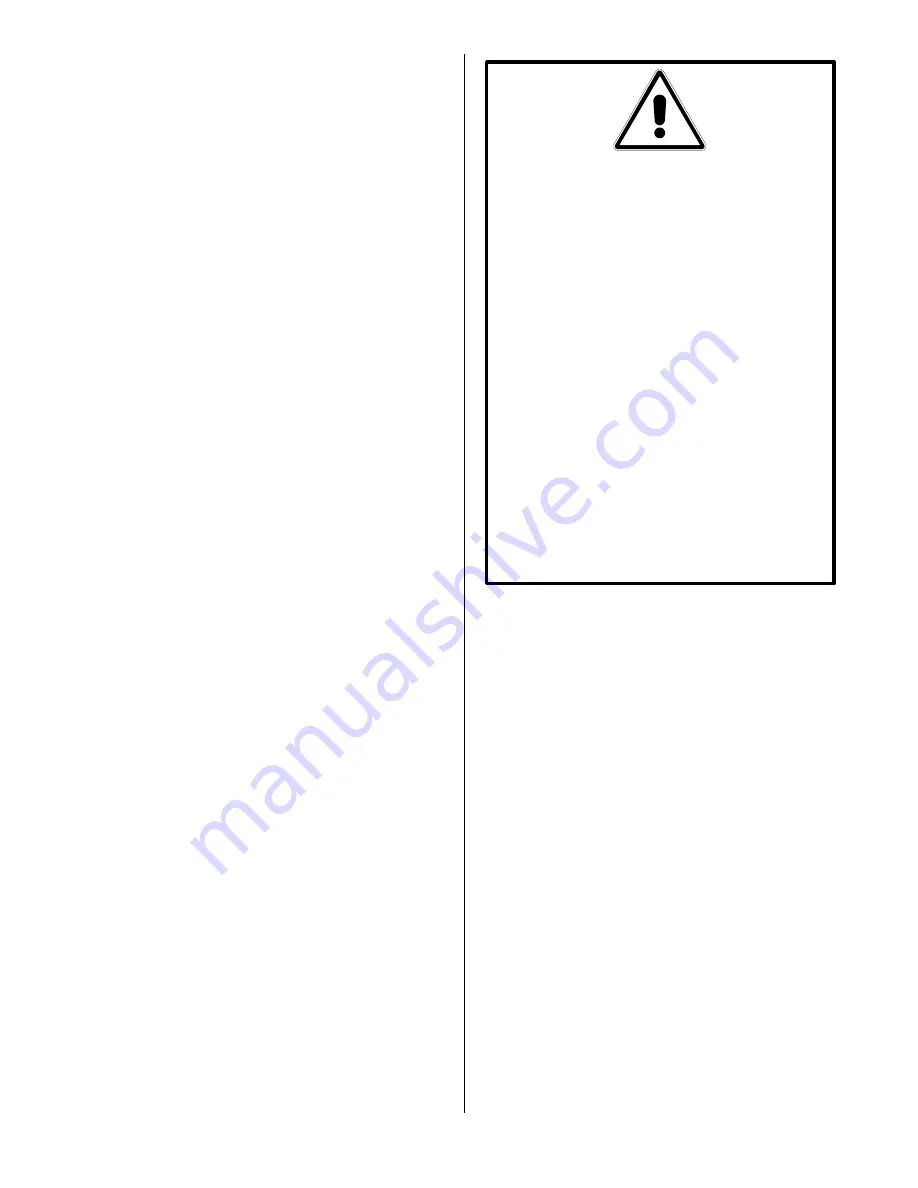
9
3.6 FINAL PREPARATION:
a.
When using liquid shortening
(cooking oil), fill the fryer to the “oil
level” line scribed into the back of the
fryer vessel.
b.
When using solid shortening, either
melt it first, or cut into small pieces
and pack into cool zone (bottom) of
the frying vessel. Do not leave any
air spaces or disturb the sensing
bulbs. Melt shortening by turning the
heaters “ON” for five or ten seconds,
“OFF” for a minute, repeating cycle
until shortening is melted. If oil starts
to smoke while melting this way,
shorten the “ON” cycle and lengthen
the “OFF” cycle. Smoke indicates oil
scorching, shortening its useful life.
NOTE:
Never melt a solid block of shortening
by setting it in the vessel or on top of
the heating elements. This is unsafe,
inefficient and dangerous.
c.
When the fryer vessel is filled and
the shortening melted, replace the
crumb screen gently over the heater
elements to prevent splashing of hot
oil. Wear gloves when replacing the
crumb screen.
d.
Before starting operation, turn the
temperature controller to the probable
working temperature; wait for the
temperature to stabilize then check
with a high-quality immersion
thermometer.
WARNINGS!
NEVER OPERATE FRYER
WITHOUT ENOUGH COOKING
COMPOUND OR WATER IN
THE VESSEL TO COVER THE
HEATING ELEMENTS.
ALWAYS WEAR OIL-PROOF,
INSULATED GLOVES WHEN
WORKING WITH THE FRYER
FILLED WITH HOT OIL.
ALWAYS DRAIN HOT OIL INTO
A METAL CONTAINER. HOT
OIL CAN MELT PLASTIC
BUCKETS AND CRACK GLASS
CONTAINERS.





































